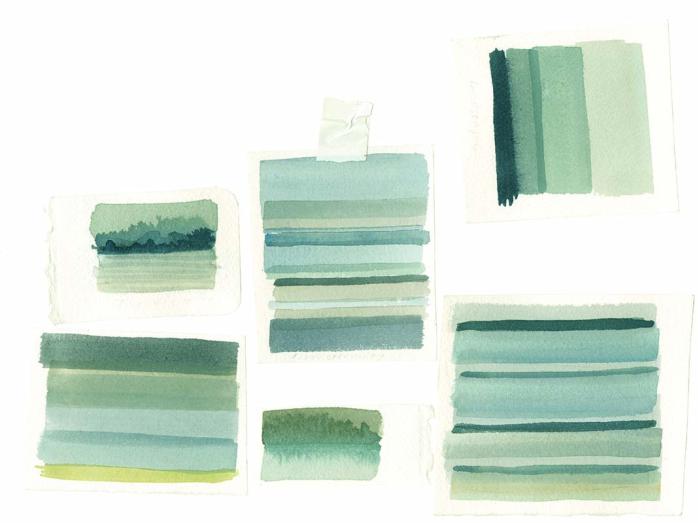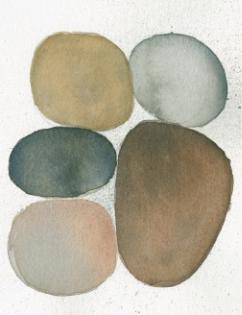
- •Acknowledgments
- •Introduction
- •Landscape
- •Ocean/Sky
- •Light
- •Wildflowers
- •Fog, Mist, and Haze
- •Forest, Lichen, and Moss
- •The Colors of Point Reyes National Seashore
- •Materials
- •Essential Equipment
- •Optional Equipment
- •Preparation
- •Paper Size & Grid
- •Pigments & Color Theory
- •Technique
- •Brush Marks
- •Painting
- •A Note on the Photographs
- •Habitat
- •Light
- •Weather
- •Seasons
- •Seasons: A Year in Color
- •Antigua, Guatemala
- •Lake Atitlán, Guatemala
- •Pátzcuaro, Mexico
- •Luxor, Egypt
- •The Dead Sea, Jordan
- •Petra, Jordan
- •Lake Issyk-Kul, Kyrgyzstan
- •Newport, Pennsylvania
- •Barney’s Joy, Massachusetts
- •Sacred Valley, Peru
- •Dominica, West Indies
- •Isle of Skye, Scotland
- •Inverness, Scotland
- •Mitchell, Oregon
- •New York, New York
- •San Francisco, California
- •Portland, Oregon
- •Big Picture
- •Detail
- •Sky Patch
- •Terrain
- •Rocks
- •Water
- •Color Walk
- •Color Memory
- •Naming Colors
- •Color Mixing
- •Primary and Secondary Colors
- •Tertiary Colors
- •Analogous Colors
- •Complementary Colors
- •Value or Tone
- •Color Temperature
- •How Many Greens are there?

ROCKS
Rocks speak of an Earth that is 4.5 billion years old. I love to hold a smooth rock in my hand—a touchstone through time and place.
Rocks—round, flat, egg-shaped, moonstones, heart-shaped, with rings around them, striped, speckled—embody what happens to color through the ages in response to such things as temperature, wind, rain, or erosion. To paint the colors of rocks, you need to hone your senses to the subtleties of the colors they contain. It’s a great way to practice mixing colors. You won’t get the color of rocks right out of a tube.
Built environments, too, tell the color of place: brownstones in Manhattan, gray-yellow volcanic stone in Rome, terra-cotta bricks in Portland, Oregon, and Boston.
Not only are there colors in rocks, but rocks are colors. The origin of paint pigments started out as rocks in particular places: burnt sienna originally came from a certain soil in Italy, red ochre from a mine in the aboriginal lands of Australia, ultramarine from semiprecious stone in northeastern Afghanistan.


PRACTICE
•Pick up any kind of rock—from ones found while hiking in the forest or desert to pebbles found on the street. Note the different colors and striations and paint a palette of the colors you see.
•Paint a palette of rocks at the beach. Notice the differences in colors when they are wet versus dry.
•Paint the subtle colors you see in a stone wall or an old brick wall. How do these palettes differ?
